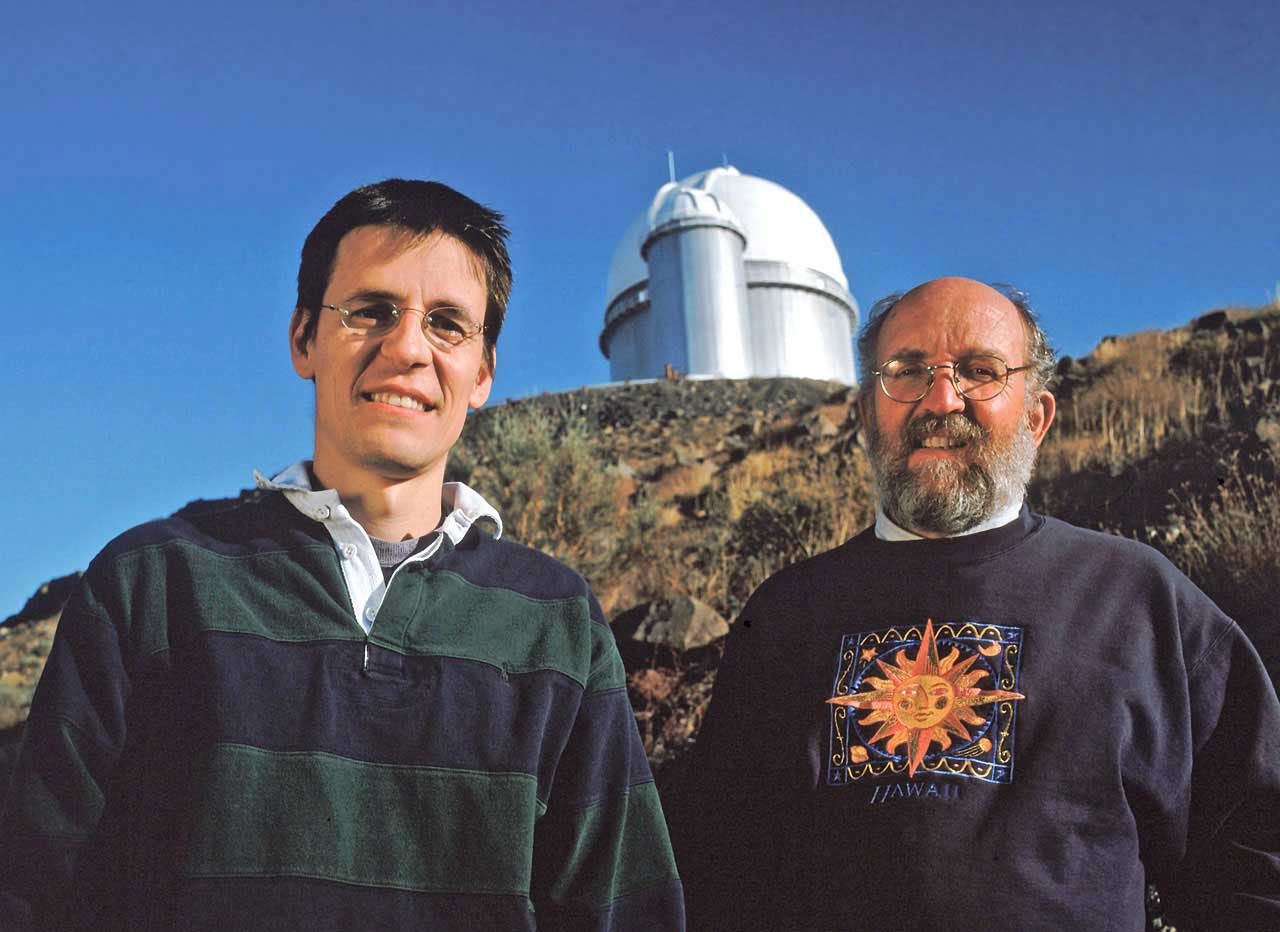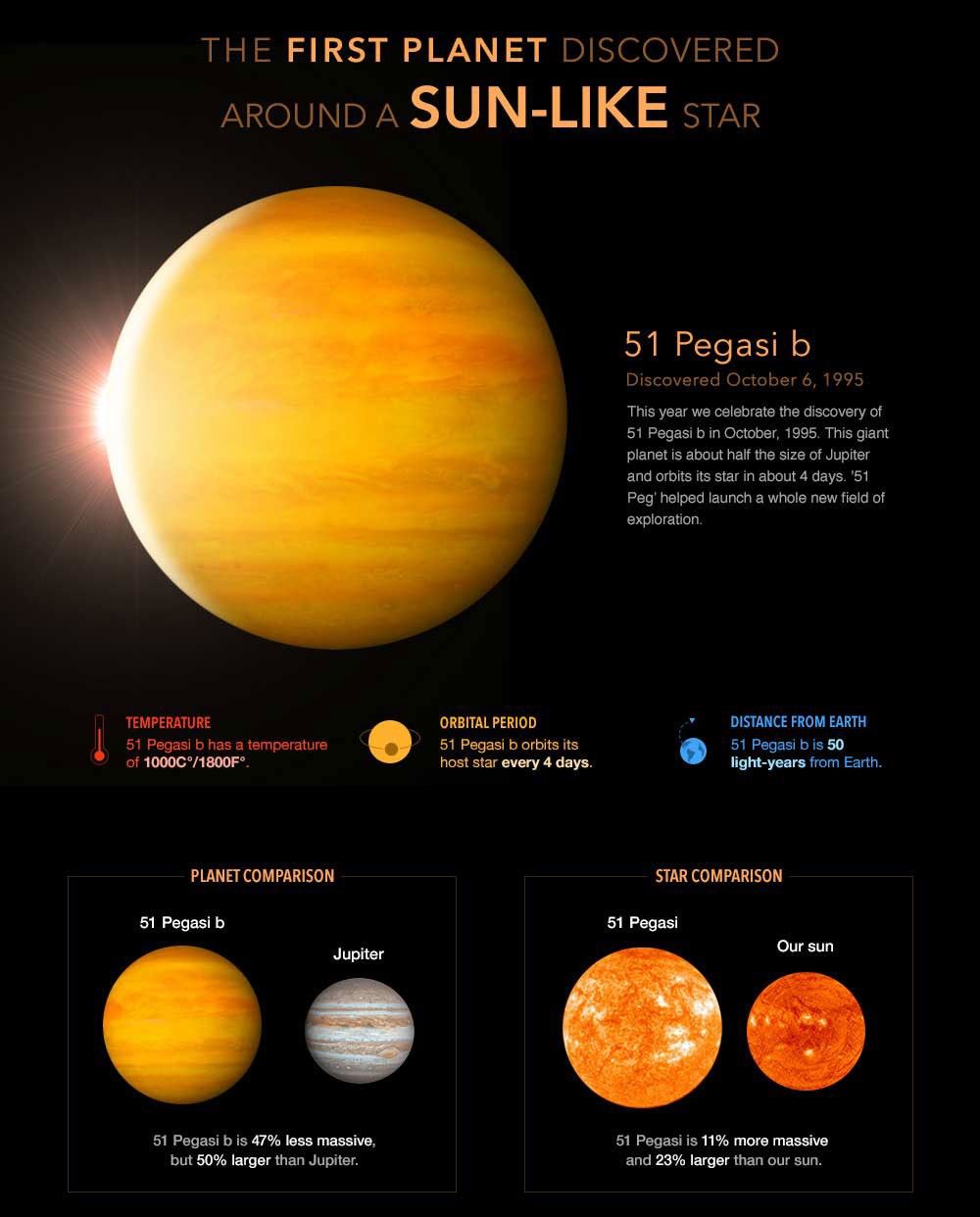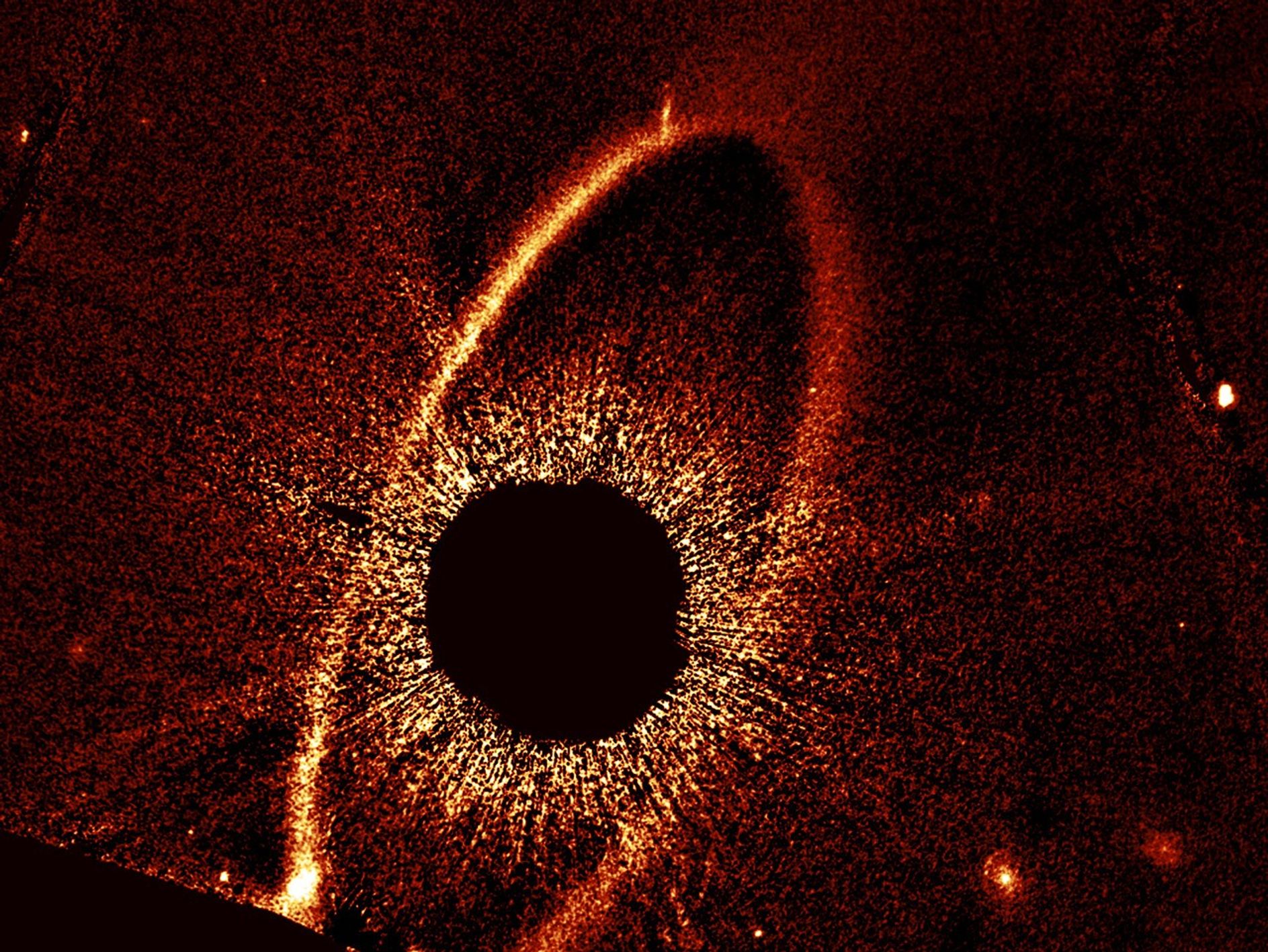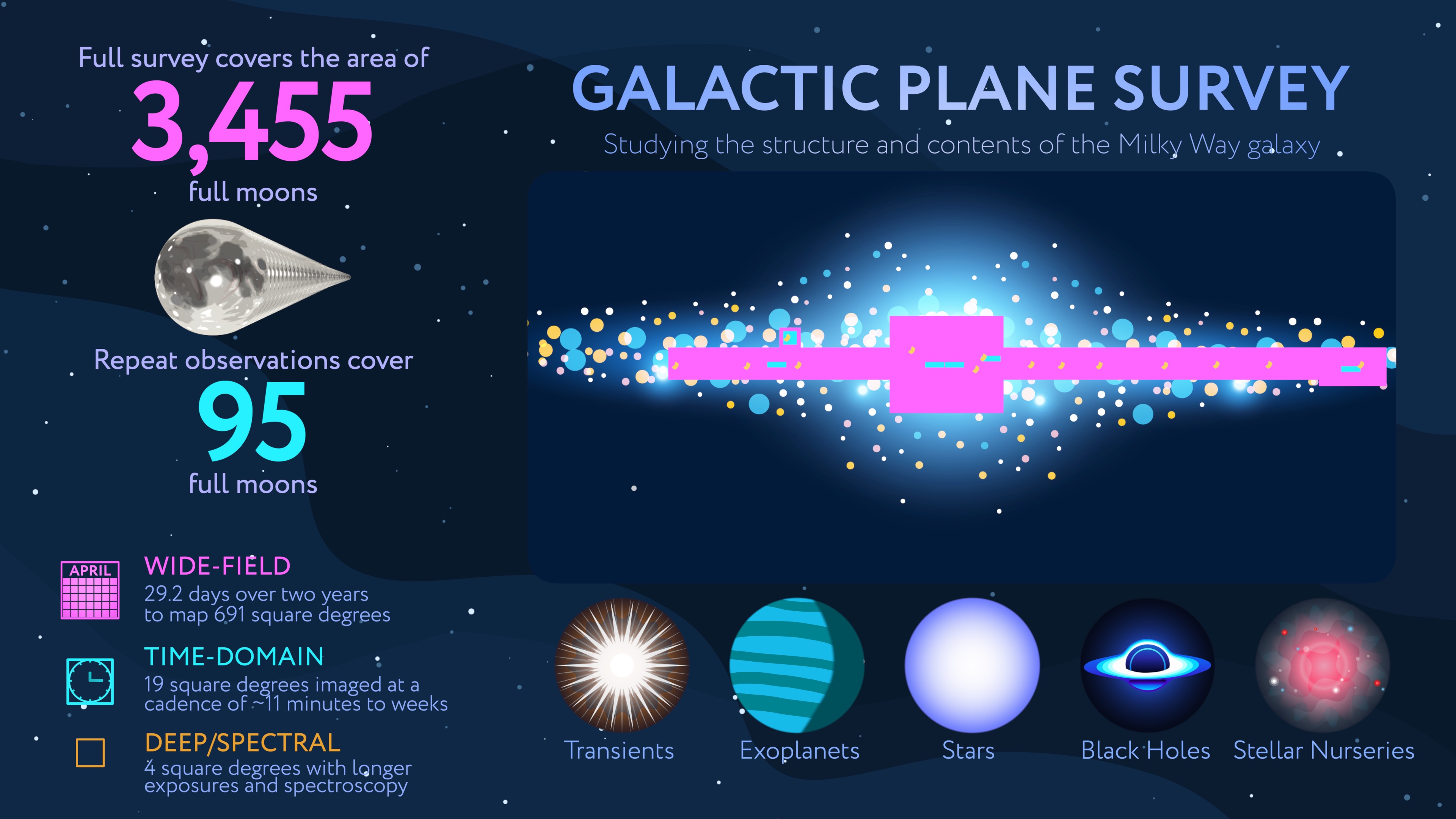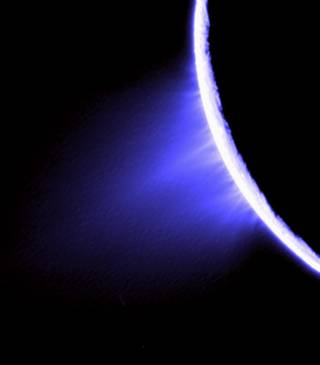NASA/JPL-Caltech
An Exoplanet First: What Is 51 Peg b?
51 Pegasi b, also called "Dimidium," was the first exoplanet discovered orbiting a Sun-like star in 1995. In 2019, its discoverers, Michel Mayor and Didier Queloz, shared the Nobel Prize in Physics. 51 Peg b is a "hot Jupiter" – a gas giant exoplanet (a planet beyond our solar system). 51 Peg orbits its star every four days and has a temperature of 1,000-1,800 degrees F (538-982 degrees C). It's 51 light-years from Earth.
The Swiss team of Michel Mayor and Didier Queloz made a stunning announcement in October 1995: the first detection of a planet orbiting a star like our Sun. Though not quite the first “exoplanet” – a planet beyond our solar system – it captured the world’s attention and opened the floodgates of discovery. Today more than 5,500 exoplanets are confirmed to be in orbit around other stars.
The planet found by Mayor and Queloz, 51 Pegasi b, is a star-hugging gas giant known as a “hot Jupiter” that takes only four days to complete one orbit – a “year” for 51 Peg. It would join a menagerie of weird worlds that includes super Earths – mysterious planets larger than Earth and smaller than Neptune – mini-Neptunes, and big gas giants several times the size of our own Jupiter.
These large planets make such tight orbits that they cause a pronounced “wobble” in their stars, their gravity tugging them first this way, then that. That made them easier to find in the early days of planet hunting, using a detection method known as radial velocity.
This strange assortment would also include the first-ever exoplanet detections, “pulsar planets” that orbit the rapidly spinning remnant of an exploded star known as a pulsar. A significant portion of the exoplanets discovered so far also include rocky planets in Earth’s size range, some at the right distance from their stars to allow the possibility of liquid water pooling on their surfaces.
Fast Facts
- The discovery of 51 Pegasi b helped launch a whole new field in astronomical research.
- It was the first exoplanet to have its reflected visible light spectrum observed.
- 51 Peg b was the first exoplanet confirmed around a Sun-like star; a previous discovery in 1992 found planets orbiting a pulsar star, but at the time many were skeptical planets could exist around these volatile stars




























